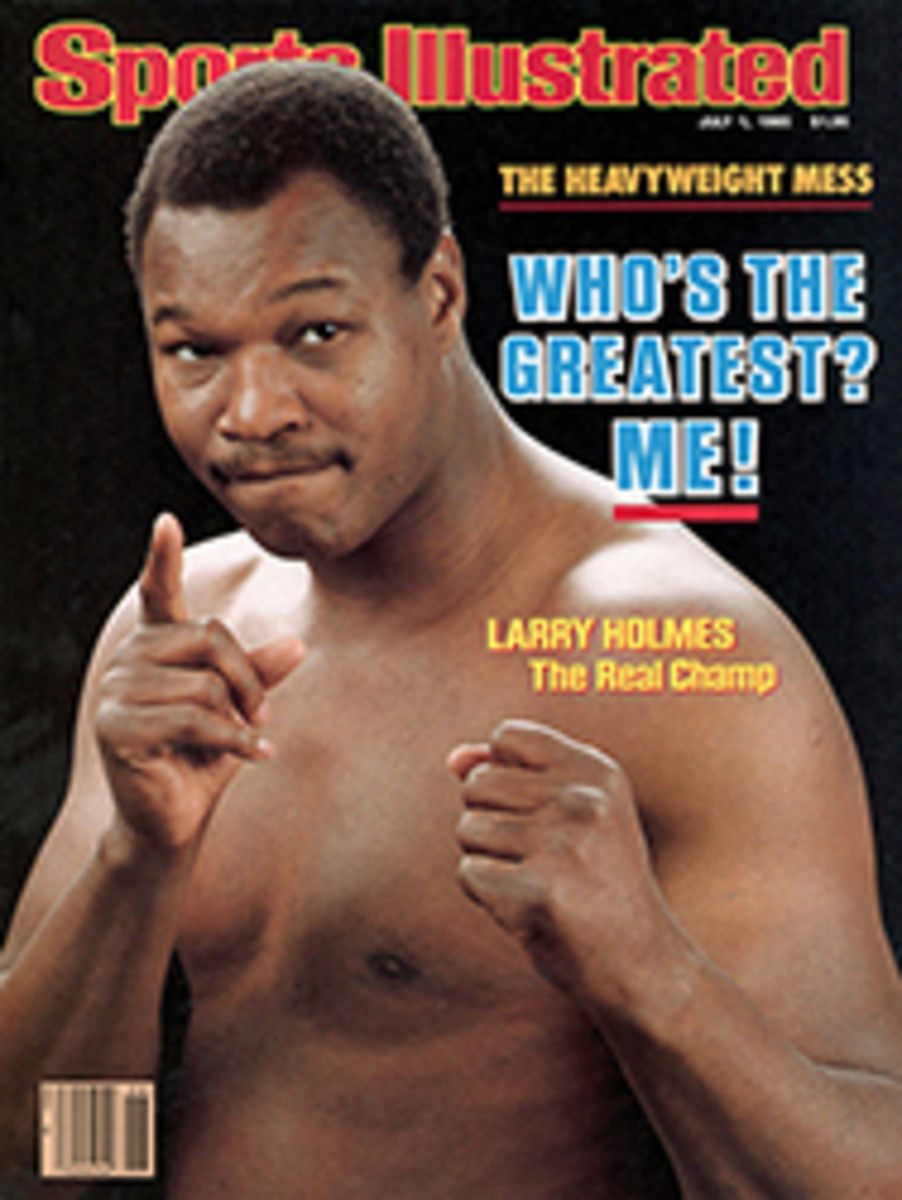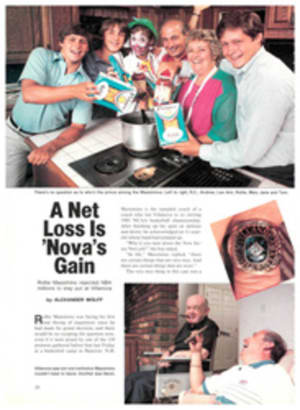
Now Eric's Hell On Wheels, Too
For a good while Eric Heiden had been expecting someone to make a move. But every time he looked over his shoulder, all he saw was another statue looking at him. The lead riders in Sunday's 156-mile U.S. Pro Cycling Championship in Philadelphia, Heiden included, had broken away from the rest of the field nearly an hour and a half earlier, and for 45 miles Heiden had been waiting for one of the bigger names on his 7-Eleven team to overtake him. Heiden is the most familiar name on his team, of course, but that's because he won five gold medals in speed skating at the 1980 Winter Olympics. The only chance he was given to win in Philadelphia was if it rained very hard and the course—or hell—were suddenly to freeze over.
Heiden was waiting to give way to teammates Davis Phinney and Ron Kiefel, both bronze medalists in cycling at the '84 Olympic Games. He and Tom Schuler were only trying to control the pace of the front-runners to assist their 7-Eleven mates. "We were really up there pulling until Phinney and Kiefel could catch up," Heiden said later. "We were just going to sit and wait for them because we felt they had the best ability."
However, as the five leaders came swirling down Kelly Drive for the last time, some of the statues in Fairmount Park were making better moves than Kiefel or Phinney. "Every time they tried to break from that pack," said Schuler, "twelve guys would go with them. So they stayed back." With only seven miles of cycling on the Benjamin Franklin Parkway left in the race, Heiden suddenly realized that the way things were going, he might have to win the thing. It was a dirty job, but somebody had to do it. So at 3 p.m., nearly 6½ hours after the start, Heiden sprinted to victory by a bike length over Jesper Worre of Denmark. Jens Veggerby, also of Denmark, was third.
Heiden has been a steady but unspectacular performer since turning pro four years ago, and though his legs are so heavily muscled they almost look deformed, the other American riders don't take him too seriously. "Eric is a good rider, but he doesn't train enough," said Jock Boyer, a veteran campaigner on the European circuit. "He's involved in too many things." Indeed, Heiden had worked for ABC during the last Olympics. Two months ago he took his medical school entrance exam, and then spent two weeks racing in Italy. Just two weeks ago he attended commencement exercises at Stanford. This week he's covering the Tour de France for CBS.
Like the other 41 Americans in the 74-man field, Heiden was no doubt happy to be competing in what amounted to the first national championship road race in this country. With a purse of $100,000—$20,000 to the winner—it was also the richest one-day cycling event in the world. The 14.4-mile circuit meandered through parks and azalea gardens and along the Schuylkill River, where rowers sculled indifferently to the buzz of the angry swarm of bicycles onshore. An early breakaway developed and then disintegrated before noon. Not until the Gothic steeples of St. Josaphat's Church came into view on Lap 7 did the race begin to take shape, with Heiden and Schuler out there with the breakaway group. The parish priest had said his final blessing, and the members of his flock had hurried home to their stoops in the little Polish community of Manayunk. There the riders had to climb a steeple of rock called the Manayunk Wall.
Manayunk is an Indian word that means "flowing water," and though it's probably not what the Indians had in mind, when the riders went churning up Lyceum Avenue, they shimmered in the afternoon sun like a river flowing straight uphill. The Manayunk Wall rises 250 feet in just half a mile, but nobody in the neighborhood had ever thought to call the hill a wall before the race. "I've been walking up it for 43 years," said 76-year-old Helen Wonsiewski. "How do you think I got so short? I'm five feet tall, and I'm shrinking fast."
Wonsiewski sat in a lawn chair watching the race with several thousand neighbors, occasionally speaking to them in Polish. When Wonsiewski came to this country 73 years ago, the stones used as ballast on the ships were frequently brought to Manayunk to build walls and pave the streets. Fortunately, the cyclists didn't have to climb a cobblestone wall, but that was about the only good thing about the ascent that one rider predicted before the race "could be a real death march." As the laps melted away, most of the bodies were buried behind the Manayunk Wall.
Even Heiden knew that his body probably should have been one of them. "It's great for sprinting and flat courses," he says, "but on hill-climbing courses I'm usually dead last." At 180 pounds Heiden is a hulking physical specimen compared with most world-class cyclists; when he started riding professionally in 1980, his 7-Eleven teammates dubbed him Gomer. "They called me that because I had a habit of destroying a lot of equipment when I was getting started," Heiden says. "I was big and wasn't real smooth on a bicycle. I used to break wheels, crash, bend frames, things like that."
Heiden held his own on the wall all day, despite repeated attempts by Veggerby and Worre to break from the lead pack at the top of the hill. "I was cramping up pretty badly on the hills during the last couple of long laps," Heiden said. "I was trying to rest, but when they attacked I had to go with them. A couple of times my legs almost locked."
Heiden may have been the only rider that anyone in Manayunk had ever heard of, but last week's race almost surely would never have happened had the U.S. team not been so successful at the '84 Olympics. Although competitive cycling got its start in this country, and six-day velodrome races were among the staples of the Jazz Age, the sport has been almost the exclusive province of Europeans for the past half century. But when Connie Carpenter-Phinney and Alexi Grewal won gold on opening day in Los Angeles, the U.S. had its first Olympic cycling medals in 72 years. "The roar of the crowd that day was incredible," said Kiefel. "My ears were ringing until three o'clock the next morning." For many of the American riders, that buzz would not go away.
"The Olympics suddenly made bicycle racing popular and understandable in this country," says Dave Chauner, the race director in Philadelphia. "Before that, people thought it was only for crazy Frenchmen who didn't mind falling off their bikes in the Alps. I compare cycling now to where distance running was in this country in 1969. When Frank Shorter won at the '72 Olympics, all of a sudden marathon running was not just something for barefooted Ethiopians."
The course in Philadelphia was designed to favor the U.S. riders, who tend to prefer flat terrain, and except for the Manayunk ascent, it did. Nine of the first 11 finishers were Yanks. "We want our Americans to be competitive," said Chauner. "I wouldn't want them to be outshone."
Regrettably, the two best-known American riders, Grewal and 1983 world champion Greg LeMond, weren't in Philly. Hepatitis knocked Grewal out of the race, and LeMond, who remains one of the top two or three cyclists on the international circuit, didn't want to risk an injury a week before the start of the Tour de France. In fact, Paul Sherwen of Great Britain was the only rider in Philly who was expected to compete in the prestigious Tour. "The people coming to our race don't know who the top names in the sport are anyway," said Chauner.
Nevertheless, Chauner's heart must have fairly leaped when he saw Heiden's well-known kisser coming down the straight on the final sprint. Heiden was lying third in the five-man lead group coming off the last turn, his legs pumping so hard that his thighs looked as if they were breathing. In the bunting along the course he had set a triggering point for himself. "I decided to go at the Swedish flag [100 yards from the finish]," he said. "The guys in front of me moved to the right, and left just enough of a gap for me to slide through."
If Heiden had looked to his right as he flashed into first place, he would have been able to see The Thinker studying him from his perch in front of the Rodin Museum. The old boy never moved but Heiden finally did.
PHOTO
ANTHONY NESTE
No one, including Heiden himself, thought he stood any chance of leading the pack.
PHOTO
GEORGE TIEDEMANN
[See caption above.]
PHOTO
GEORGE TIEDEMANN
Worre (53), the runner-up, finished a bike length behind Heiden (in front below), who set the early pace with teammate Schuler.
PHOTO
JOHN IACONO
[See caption above.]
PHOTO
GEORGE TIEDEMANN
When the riders hit the Wall at Manayunk, they started on a half-mile "death march."

